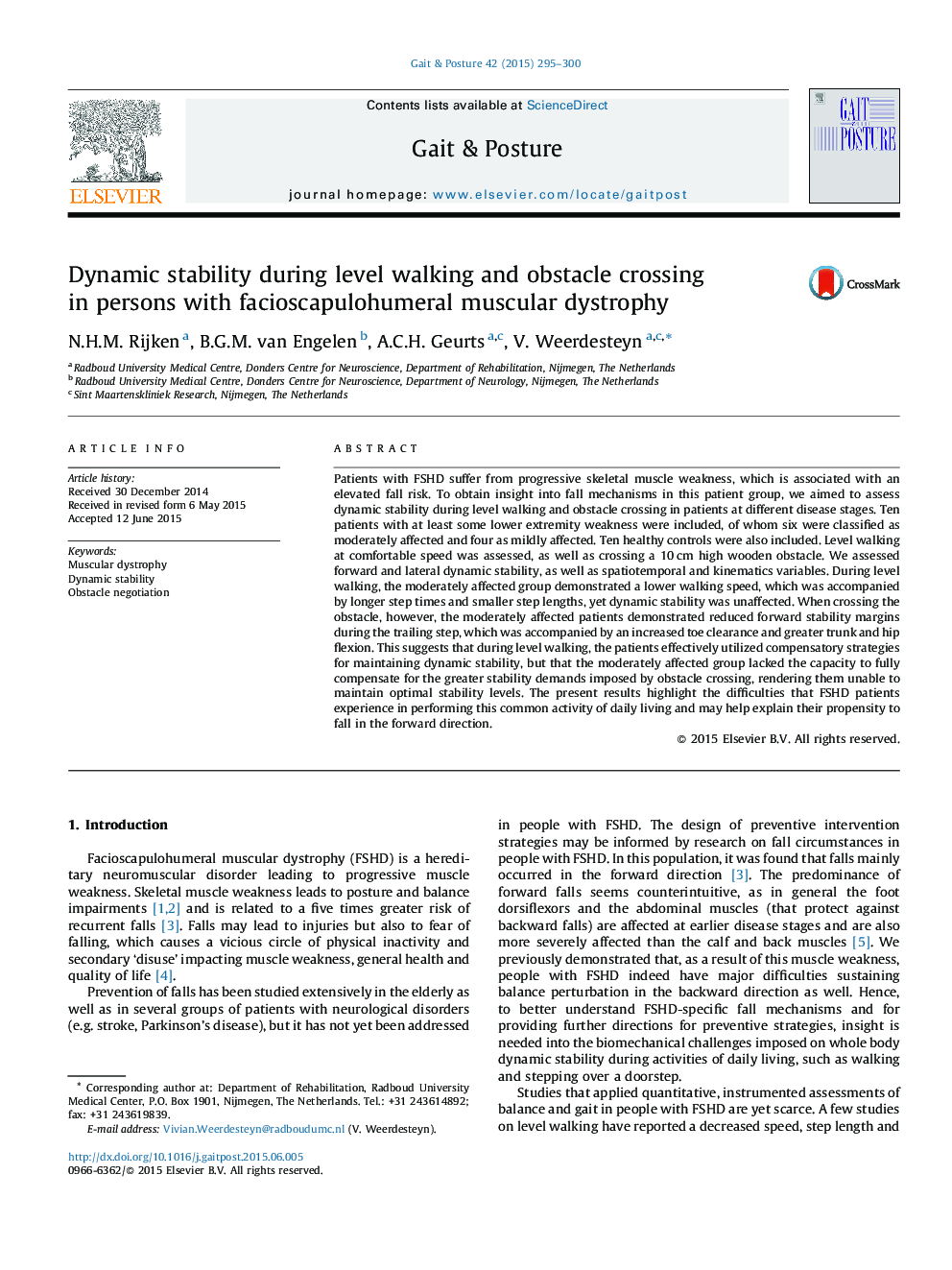| Article ID | Journal | Published Year | Pages | File Type |
|---|---|---|---|---|
| 6205564 | Gait & Posture | 2015 | 6 Pages |
â¢We evaluate quantitative, instrumented dynamic stability in persons with FSHD.â¢Level walking stability is maintained by adjustment of walking speed and step time.â¢Forward dynamic stability decreases in FSHD when crossing a small obstacle.â¢Increased trunk/hip flexion and trailing toe clearance is found in moderate FSHD.
Patients with FSHD suffer from progressive skeletal muscle weakness, which is associated with an elevated fall risk. To obtain insight into fall mechanisms in this patient group, we aimed to assess dynamic stability during level walking and obstacle crossing in patients at different disease stages. Ten patients with at least some lower extremity weakness were included, of whom six were classified as moderately affected and four as mildly affected. Ten healthy controls were also included. Level walking at comfortable speed was assessed, as well as crossing a 10Â cm high wooden obstacle. We assessed forward and lateral dynamic stability, as well as spatiotemporal and kinematics variables. During level walking, the moderately affected group demonstrated a lower walking speed, which was accompanied by longer step times and smaller step lengths, yet dynamic stability was unaffected. When crossing the obstacle, however, the moderately affected patients demonstrated reduced forward stability margins during the trailing step, which was accompanied by an increased toe clearance and greater trunk and hip flexion. This suggests that during level walking, the patients effectively utilized compensatory strategies for maintaining dynamic stability, but that the moderately affected group lacked the capacity to fully compensate for the greater stability demands imposed by obstacle crossing, rendering them unable to maintain optimal stability levels. The present results highlight the difficulties that FSHD patients experience in performing this common activity of daily living and may help explain their propensity to fall in the forward direction.
